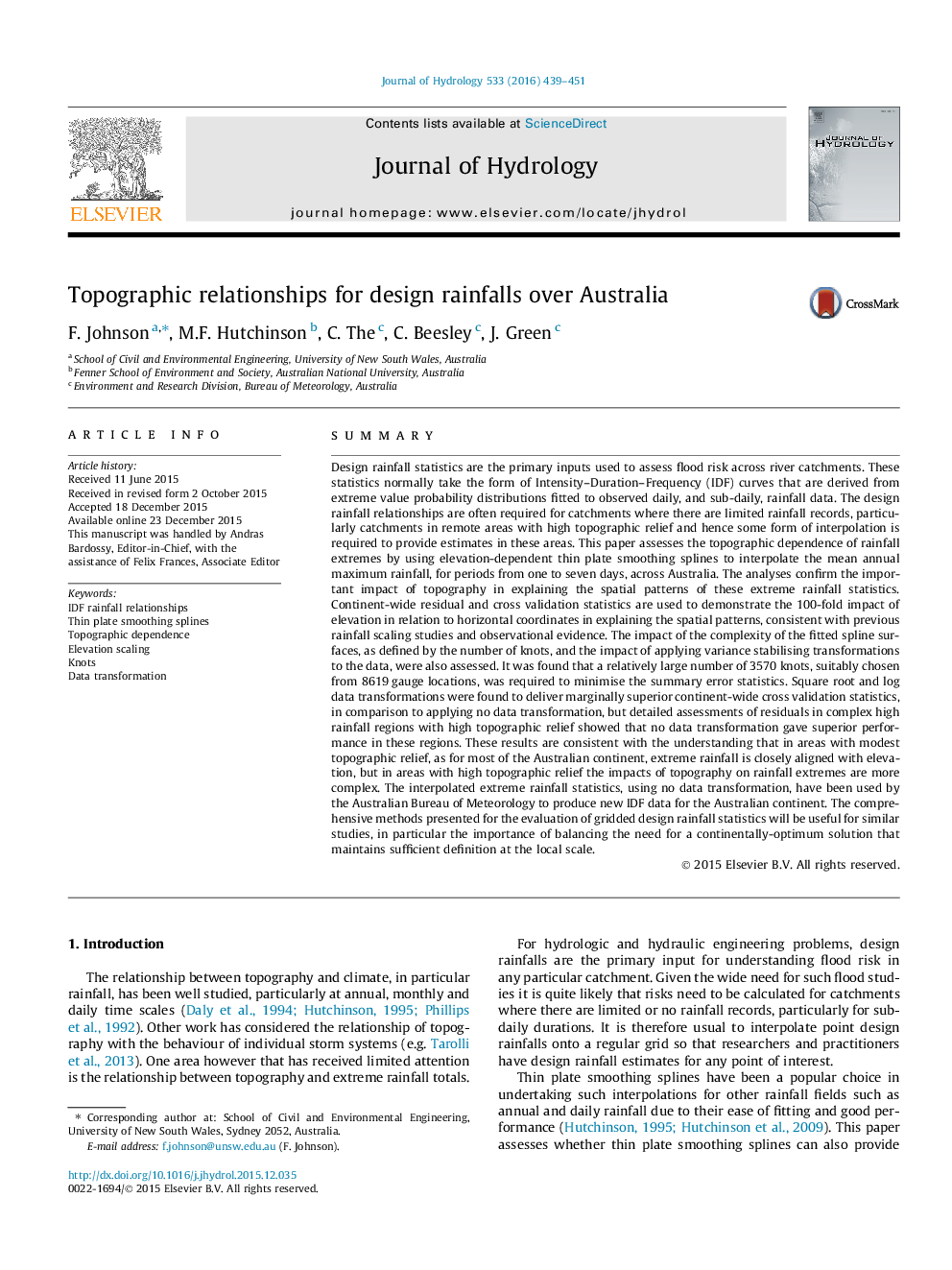| کد مقاله | کد نشریه | سال انتشار | مقاله انگلیسی | نسخه تمام متن |
|---|---|---|---|---|
| 6410531 | 1629919 | 2016 | 13 صفحه PDF | دانلود رایگان |
- Thin plate smoothing splines are used to fit extreme rainfall statistics.
- Continent wide and catchment specific optimisation has been undertaken.
- Elevation has greater impact than horizontal position on spatial rainfall patterns.
- A relatively large number of knots are required to minimise errors.
- Data transformation improves the overall fit but not for areas of high relief.
SummaryDesign rainfall statistics are the primary inputs used to assess flood risk across river catchments. These statistics normally take the form of Intensity-Duration-Frequency (IDF) curves that are derived from extreme value probability distributions fitted to observed daily, and sub-daily, rainfall data. The design rainfall relationships are often required for catchments where there are limited rainfall records, particularly catchments in remote areas with high topographic relief and hence some form of interpolation is required to provide estimates in these areas. This paper assesses the topographic dependence of rainfall extremes by using elevation-dependent thin plate smoothing splines to interpolate the mean annual maximum rainfall, for periods from one to seven days, across Australia. The analyses confirm the important impact of topography in explaining the spatial patterns of these extreme rainfall statistics. Continent-wide residual and cross validation statistics are used to demonstrate the 100-fold impact of elevation in relation to horizontal coordinates in explaining the spatial patterns, consistent with previous rainfall scaling studies and observational evidence. The impact of the complexity of the fitted spline surfaces, as defined by the number of knots, and the impact of applying variance stabilising transformations to the data, were also assessed. It was found that a relatively large number of 3570Â knots, suitably chosen from 8619Â gauge locations, was required to minimise the summary error statistics. Square root and log data transformations were found to deliver marginally superior continent-wide cross validation statistics, in comparison to applying no data transformation, but detailed assessments of residuals in complex high rainfall regions with high topographic relief showed that no data transformation gave superior performance in these regions. These results are consistent with the understanding that in areas with modest topographic relief, as for most of the Australian continent, extreme rainfall is closely aligned with elevation, but in areas with high topographic relief the impacts of topography on rainfall extremes are more complex. The interpolated extreme rainfall statistics, using no data transformation, have been used by the Australian Bureau of Meteorology to produce new IDF data for the Australian continent. The comprehensive methods presented for the evaluation of gridded design rainfall statistics will be useful for similar studies, in particular the importance of balancing the need for a continentally-optimum solution that maintains sufficient definition at the local scale.
Journal: Journal of Hydrology - Volume 533, February 2016, Pages 439-451
